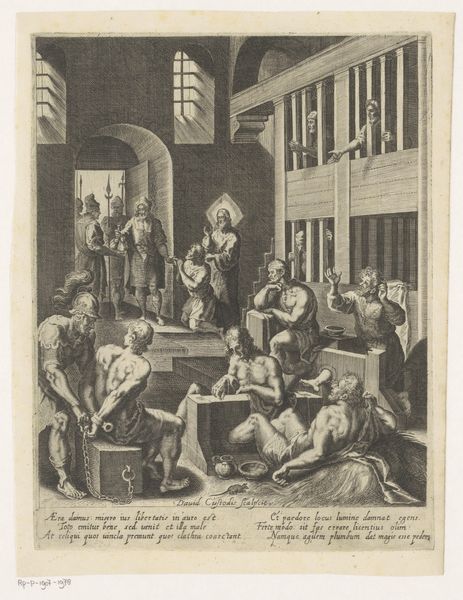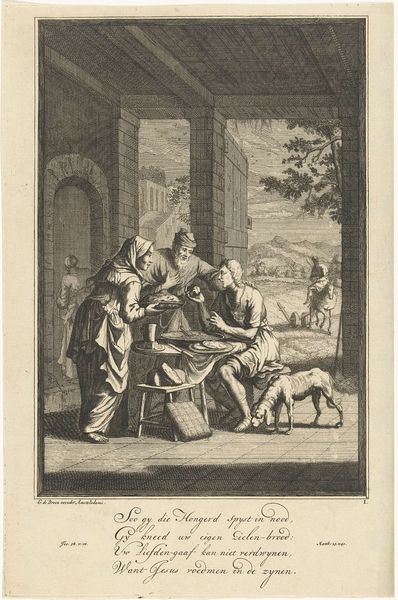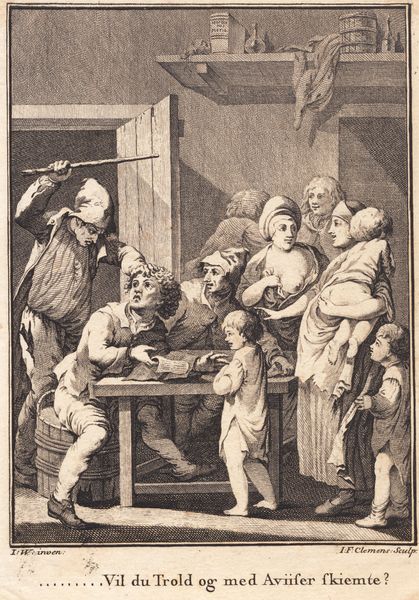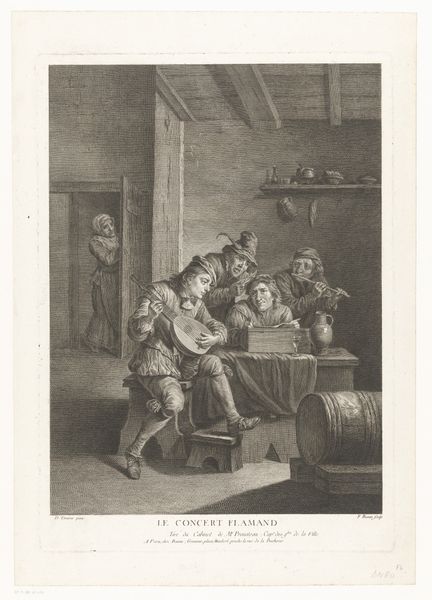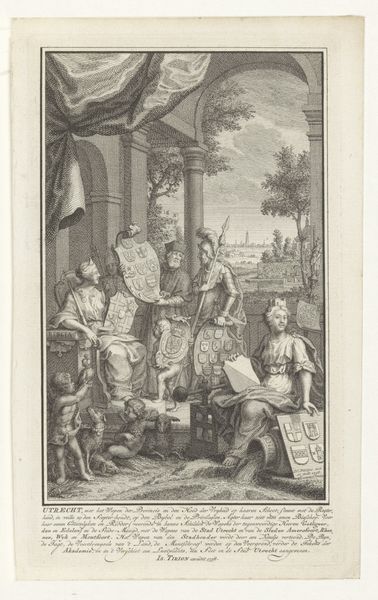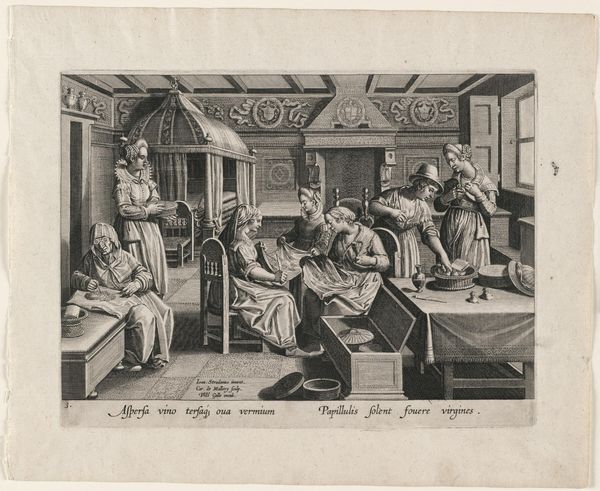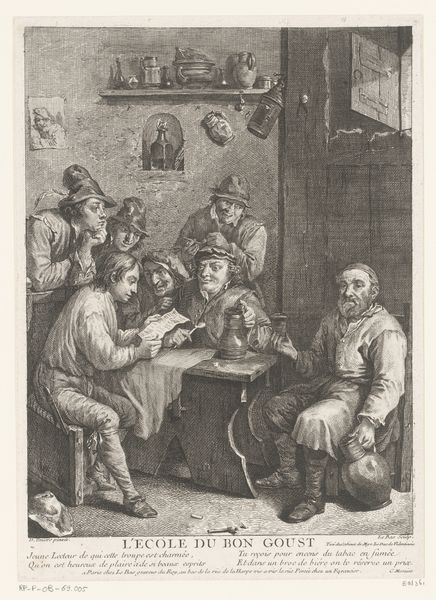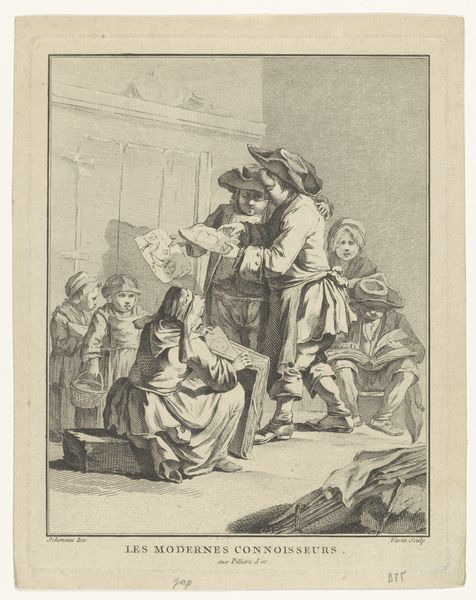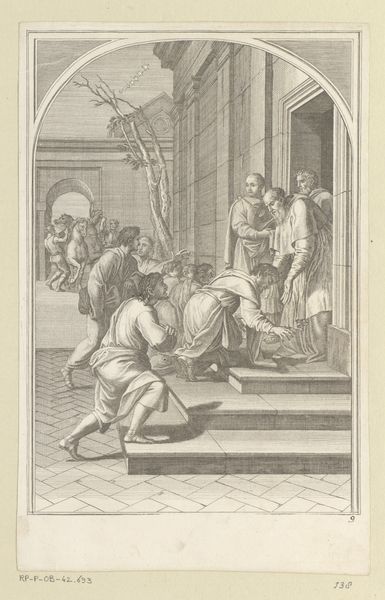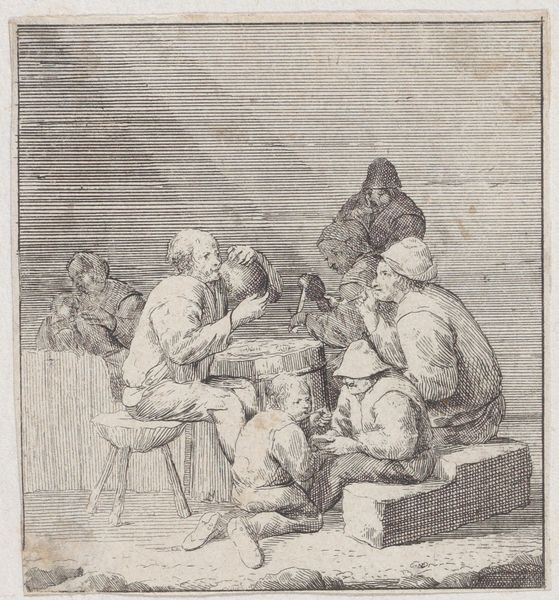
print, engraving
#
allegory
#
baroque
# print
#
old engraving style
#
figuration
#
history-painting
#
engraving
Dimensions: height 176 mm, width 107 mm
Copyright: Rijks Museum: Open Domain
Curator: Let's take a closer look at "Allegorie op de provincie Holland," an engraving created in 1742 by Jan Caspar Philips. Editor: My first impression is that this print looks grand and important! It’s incredibly detailed for an engraving, like a stage play frozen in time. Curator: Indeed! It's bursting with symbolic imagery. Philips uses a baroque style to celebrate Holland. Observe how he meticulously renders textures; look at the fabric draping, and how the engraver captures the reflective surfaces of coins and metal objects! The labor involved is astonishing, with those fine, etched lines building form and narrative depth. Editor: Absolutely, it is the depiction of wealth that really fascinates me. Check out the coins at the base there! To me, it feels like an idealized depiction, with allegorical figures, seemingly celebrating commerce and maybe governance itself, surrounded by shields. But I wonder, who exactly was the intended consumer of such imagery? And what other means of production, beyond wealth and symbolism, are encoded in those very detailed, finely cut lines. Curator: I think it definitely speaks to the wealth and self-image that the Dutch Republic cultivated. And, from my perspective, Philips cleverly combines national pride and artistic skill. The scene unfolds like a theatrical production, with Lady Holland elevated, suggesting divine right or providence... perhaps some tongue in cheek wit is lurking. Editor: Hmmm, right, and the buildings in the backdrop feel equally staged. While "Allegorie op de provincie Holland" is rooted in history, it still resonates today. Curator: Definitely! Exploring these artworks invites us to consider themes of identity, authority, and the material foundations upon which our society rests. Editor: Absolutely. It’s through analyzing the means of making—labor, artistry, material—that these older works begin speaking directly about contemporary concerns with consumerism, and class.
Comments
No comments
Be the first to comment and join the conversation on the ultimate creative platform.
